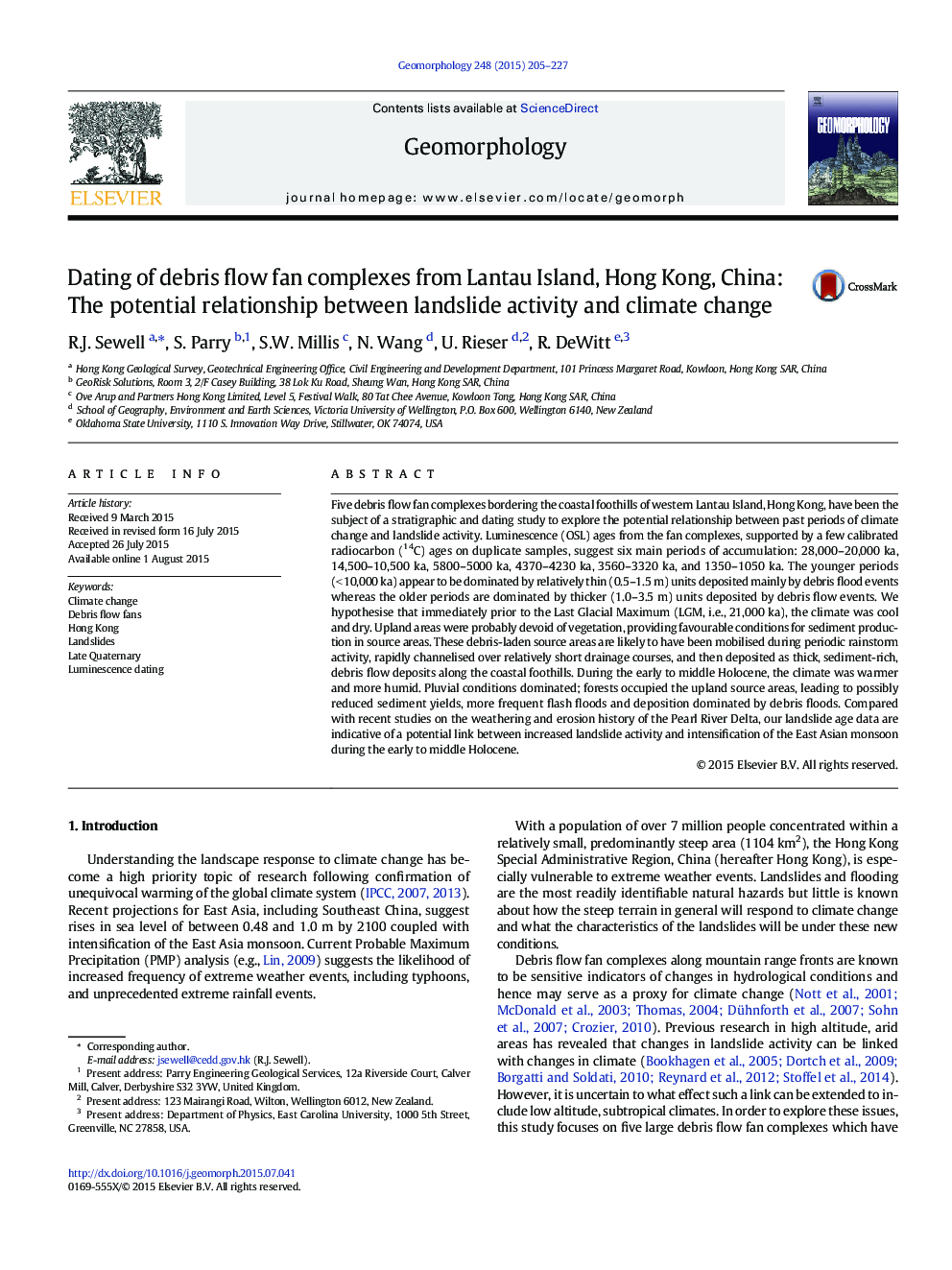| کد مقاله | کد نشریه | سال انتشار | مقاله انگلیسی | نسخه تمام متن |
|---|---|---|---|---|
| 6432052 | 1635401 | 2015 | 23 صفحه PDF | دانلود رایگان |
- A stratigraphic and dating study of five debris flow fan complexes was undertaken.
- Six periods of Late Pleistocene-Holocene fan-building activity have been identified.
- Late Pleistocene fan building was dominated by debris flow deposition.
- Holocene fan building was dominated by debris flood deposition.
- Some periods of landslide activity can be linked with known climatic changes.
Five debris flow fan complexes bordering the coastal foothills of western Lantau Island, Hong Kong, have been the subject of a stratigraphic and dating study to explore the potential relationship between past periods of climate change and landslide activity. Luminescence (OSL) ages from the fan complexes, supported by a few calibrated radiocarbon (14C) ages on duplicate samples, suggest six main periods of accumulation: 28,000-20,000Â ka, 14,500-10,500Â ka, 5800-5000Â ka, 4370-4230Â ka, 3560-3320Â ka, and 1350-1050Â ka. The younger periods (<Â 10,000Â ka) appear to be dominated by relatively thin (0.5-1.5Â m) units deposited mainly by debris flood events whereas the older periods are dominated by thicker (1.0-3.5Â m) units deposited by debris flow events. We hypothesise that immediately prior to the Last Glacial Maximum (LGM, i.e., 21,000Â ka), the climate was cool and dry. Upland areas were probably devoid of vegetation, providing favourable conditions for sediment production in source areas. These debris-laden source areas are likely to have been mobilised during periodic rainstorm activity, rapidly channelised over relatively short drainage courses, and then deposited as thick, sediment-rich, debris flow deposits along the coastal foothills. During the early to middle Holocene, the climate was warmer and more humid. Pluvial conditions dominated; forests occupied the upland source areas, leading to possibly reduced sediment yields, more frequent flash floods and deposition dominated by debris floods. Compared with recent studies on the weathering and erosion history of the Pearl River Delta, our landslide age data are indicative of a potential link between increased landslide activity and intensification of the East Asian monsoon during the early to middle Holocene.
Journal: Geomorphology - Volume 248, 1 November 2015, Pages 205-227
